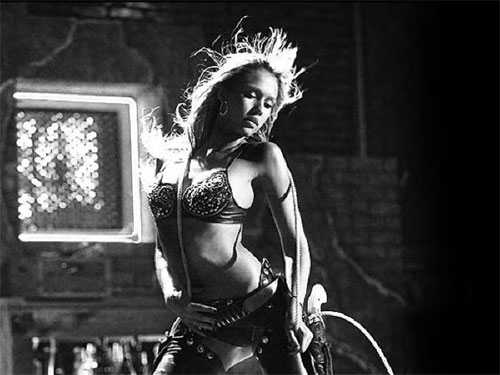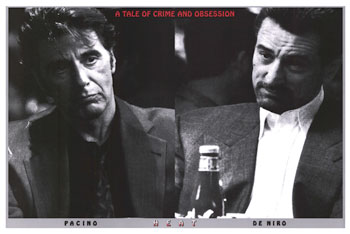|
About Gun Finishes:
Picking out a new gun is a
complicated chore. You have caliber, style, size, features, etc.
I've talked about these subjects before. However, I've never really
talked about an important aspect of the selection process... The
finish. It's actually an important factor in the gun's
functionality. There are a number of finish options to choose
from. Each one has it's advantages and disadvantages beyond
appearance. Stainless, Blued, Nickel, Parkerized, Chrome, Coated...
There are more options coming out every time you turn around.
Really the question lays with you and how, when and where you are
going to be using the firearm. Also, your hygiene. How and how
often clean the weapon... Not personal. If you are a slob and
really don't want care about the gun all that much, then blued is
not the finish for you and you might want a Stainless or Coated
gun. Lets not make any choices just yet. Instead, let's look at
each finish and see what they have to offer.
Blued: This is probably the
oldest finish to be found on a gun. Some even say it's the most
attractive finish. What this finish really is, is a carefully
controlled oxidation of the surface of the metal. Salts and other
chemicals are used to "blue" the gun. Mostly the results are a
blackened finish and not actually the color blue by any means...
There are two ways of doing this, hot and cold. Professional grade
bluing uses the hot methods as it's a more effective method and cold
Bluing is something you can actually do a home to touch up a warn
blued finish. The biggest downside to blued is that it offers very
little in terms of corrosion protection. The blued finishes that
are highly polished are better for that as there is less surface
imperfection for moisture to adhere to and take root. This is why
you must always wipe a blued gun down with an oil to displace
moisture and O2 and provide a barrier against the same. I've seen
neglected blued guns rust completely on a humid Virginian summer
night. It also offers little abrasion protection. Old duty guns
with blued finishes often look like hell. With scratches and areas
where the finish is worn down to the bare metal.. But then again
there is a certain nobility in the worn looking gun that I cannot
explain. If the gun is free of corrosion and operates smoothly...
The wear can be a sign that the owner has been there and done that
with this dependable sidearm. You can always tell the new GI's from
a distance... The are the ones wearing the BDU's that look like they
just came out of the packet. Same thing with a blued gun, really.
This is why a blued gun can still be considered in good condition
with only 60% of it's finish left. But that's another article for
another day.
Stainless isn't really a
finish... It's the material. Stainless Steel. Similar to what you
might have in your knife drawer in your kitchen. To understand
Stainless, you need to understand Steel. I'm going to over simplify
this, so if your a closet metallurgist , please don't be offended.
Steel is a mixture of iron and carbon. The carbon hardens the iron
and makes it stronger. There are other elements in there but like I
said, I'm wanting simplicity here. The Vikings may have first
discovered steel. They had swords that were often called snake
blades because of the waves of the lines in the blades... These came
about when they hammered the iron blade over coals during the swords
forging. This introduced carbon into the metal, transforming some
of the iron into steel. Well, today's steels are a lot more
complicated. Stainless is actually an alloy of steel that is given
a higher concentration of chromium. Stainless steel is good looking
and will easily stay that way longer than blued. Couple downsides
to stainless. One is that it's boring... it's vanilla. The other
is galling but this is minimal thanks to newer more advanced
alloys. I prefer to run a grease for lube in a stainless gun...
Better protection from galling. The big advantage for stainless
would be that corrosion has a much harder time getting into it. It
is an almost perfect option for concealed carry guns. Scratches
happen but can buffed out. Stainless guns can look virtually new
much longer than most other guns. If you pick stainless, you also
have the choices of "mat", "brushed", "bead blasted", or
"polished". Now days you can also get your Stainless “Blackened” so
dodge that vanilla bullet. The blackening of stainless is just like
bluing regular steel… a chemical process that creates a controlled
oxidation of the surface. Personal taste here, but you cant just
polish a scratch out of a bead blasted or blackened surface. No
thanks. In stainless, my personal preferences are for the brushed
or polished finished.
Nickel plating has been
around for a long time... An early version of chrome plating. There
were many guns back in the wild west days sporting a nickel finish.
They looked great, lasted a long time and all... But when they went,
they really went. The nickel could come off in flakes and leave a
gun with a bad case of mange. This finish has come a very long way
since the 1800's. Improvements have been made in the process and in
the chemicals used. This isn't you grampappy's nickel plate.
Nickel give you great protection from corrosion. Since it's also a
very hard surface, it's a lot harder to abrade the surface... This
means fewer scratches. The nickel finish is very pimp... Very
shiny, like chrome mostly. However there is now a "mat nickel" out
that minimizes the pimp-shine. This plating finish is also to be
had in chrome, or gold, or even titanium… even gold titanium.
Whatever you want really.
Powder Coat finishes are
simple but very effective. It covers the metal in a thin layer of
plastic. The finish is better than it sounds, and is more durable
than you might imagine. The process for powder coating is a bit
more complicated than you might think too. The process starts with
a couple chemical baths to clean and prep the metal. Then it uses
an electrical charge to attract sprayed particles to the metal to
insure a uniform distribution of the finish. Then heat is used to
cure this coating and bond it. This heat is usually done via a very
large toaster oven. Again, I have over simplified, but this is the
basic process. Different outfits will do things differently, but
this is the basic nutshell program. The result is a very tough
surface treatment that resists corrosion and abrasion. It even
looks pretty good. You have probably seen these kinds of finishes
before and didn’t even know it. One of my last handguns had this
finish, and a very popular SMG uses it as well.
There are other Spray and
Bake finishes that are more sophisticated… they don’t use a plastic,
but instead use other synthetics such as Nylon or Teflon or uses PTFE particles. These finishes have differing degrees of self
lubrication. One popular finish of this type is NP3. It sports a
high level of lubricating particles in the finish that make the
surface slick. Such finishes are good, but don’t be fooled by the
slickness, it still needs to be lubricated like any other gun.
Maybe not as much, but they should still be lubricated. NP3 and
Black-T are a good examples of this type of finish. The factory
says no lube is needed. I say it does. To answer this question I
consulted an expert in the field of lubrication, someone known to
many experienced shooters at least by reputation, George C.
Fennell. I said to him in an email that it was my theory that while
these finishes are slick, lubrication is still needed do to heat and
pressure during firing… and I asked him if my theory was correct.
Here is his answer:
“With PTFE dry film coatings, you are
absolutely right. They do need an extra level of protection, even
though they've come a long way since the old "frying pan" days, when
all you needed to do was scratch a Teflon coated surface and the
peeling was then a guaranteed and catastrophic event. Today's
coatings such as Dura Coat, Black T, and others, amalgamate the PTFE
into the base substrate, making it MUCH more resilient and long
lasting, but the oxidation and corrosion properties of the elements
will still penetrate the porosity of the coating without an added
protection like FP-10 and others. Even Walter Birdsong, the
inventor of the Black-T coating, preaches the use of the FP-10 on
all his weapons and touts it as the best "brush-less" cleaner
available today.”
George C Fennell of course sells FP-10, but his
expertise in the field of Lubrication is not diminished. I’m
testing a number of lubes, FP-10 included… but more on that at
another time. Back to the finishes. NP3 has a unique color that
is very attractive. These finishes can also look very good. This is
one advantage these finishes have… you can get them in any color you
want. You can even get them in patterns. They don’t just look
great, but offer excellent protection from corrosion and abrasion.
These high-tech finishes are becoming the wave of the future. They
are certainly a huge improvement over the finishes of the past… like Parkerized.
Parkerized finishes have
been around since I don’t know when, near the turn of the century?
1900’s? Parkerizing is often seen on US GI WWII guns and many guns
since then. It’s a tough finish that is resistant to abrasion, but
unfortunately not that resistant to corrosion. A Parkerized surface
is porous, like wood. The problem with that is moisture can sink
it’s teeth into your gun and rusting will ensue. This is why “Park”
isn’t my personal favorite finish, but that’s just me. The color of
a Parkerized finish varies from black to green to grey all depending
on the agents used in the process. The only real advantage to a
parked finish is that it’s cheap and fast and does offer more
corrosion protection than blued, but only if you keep a nice layer
of oil over it.
There are other finishes out
there... the proprietary ones. SIG has it’s own. Glock has it’s
famous “Tennifer” finish. HK has it’s “Hostile” finish. Every
maker has it’s own. Generally they are all very good, with pros and
cons… Glock’s is probably one of the toughest, but you can only get it in
black. Tennifer finish is actually not a finish at all, but a
metallurgical process performed on the metal parts of the Glock
pistols and knives. The metal is treated with a cyanide mixture
bath to increase hardness and corrosion resistance. This is not a
finish but is actually impregnated into the first few microns of the
metal. The Tennifer treatment is colorless. Glock simply powder
coats the slides black after the Tennifer process is complete. You
can take a piece of sandpaper to your slide and remove all of the
powder coat, leaving your slide a dull stainless color (which looks
pretty cool) and the Tennifer properties will be left intact.
DLC. In the last couple years
we've seen a lot of new guns coming out with a new sort of finish
and it's gone from boutique to common. Diamond Like Coatings. Guns
such as the S&W M&P series, SIG, FN, and some others are all using
these as their finishes. There a couple different types of DLC and a
few different ways to apply it, but each one has the same result....
a super hard, corrosion resistant and low friction coating that is
very thin, and looks good.
The
technical aspects of the coatings vary and I don't feel like typing
it all up, so let me link you over to a page that does.
So, you can ask me what
finish is best for your gun, but I’ll just ask you what your going
to do with it.



If any of this information
was helpful to you, feel free to send a tip to the Ogre via PayPal to
Ogre's email address.

Copyright
G H Hill 1999-2012
|











